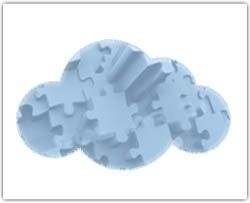Latest Articles
12.21.2012What Can Rendering Service Market Get From Cloud Computing?
12.20.2012Penetrating the Japanese Social Gaming World With the Help of Japanese Social Gaming Companies
12.19.2012Cloud-Based Rendering – the Logical Next Step for Render Farms
Archives
Categories
Tags
Android Basic Cloud Concepts big data CIO cloud Cloud adoption Cloud applications Cloud benefits cloud computing cloud concepts cloud gaming cloud hosting Cloud in business Cloud in Vertical Industries Cloud Migration Cloud News cloud provider cloud security cloud servers cloud services cloud storage cloud technology Enterprise gaming industry Google Government IaaS IT Japan mobile applications mobile gaming PaaS private cloud public cloud SaaS security Small Business small businesses smb SMBs social gaming Social Media social network virtualization virtual servers
Call 855-466-4678
09.30.2011
As a way of saying “Thank You” for joining our growing cloud community, we’re giving away an iPad 2 each month in October, November and December!
To Enter: Just “Like” our Facebook page and Complete the Entry Form for a chance to win! Good Luck!
View Official Rules
Now, you can get on-demand IT outsourcing at a reasonable cost combined with high performance IT services you need for daily operations.
GMO Cloud America has made adopting cloud hosting a seamless process for businesses of any size. With GMO’s cloud hosting solutions, you’ll find that for whatever needs arise, you’ll pay for only what you use. Scale servers up or down on demand, run on virtually any operating system and trust that your data and your networks will always be protected. Using GMO’s solutions will help you to reduce overhead and focus on growing and evolving your business.
Get started today on outsourcing your infrastructure to the cloud by taking advantage of GMO Cloud America’s $150 hosting credit!
Be sure to check out our Think Cloud blog, where we provide informative articles about cloud hosting, cloud computing and tips for migrating your business infrastructure to the cloud.
Our articles are written to provide you with tools and information to meet your IT and cloud solution needs. Join us on Facebook and Twitter.
09.29.2011

This week we are going to look at how a Major League Baseball team, the Tampa Bay Rays, uses a private cloud and plenty of virtual muscle to get it through one of the longest seasons in professional sports. What started as a need to solve a problem (IT was told they needed to bring down their electricity costs and they were running out of space at their on-site data center) grew to be a game changer that in the end revolutionized their approach to team IT support.
In 2007 the operations department told the Director of IT Juan Ramirez that the main data center in Saint Petersburg, Florida was consuming too much electricity and Ramirez knew that they were running out of room. They needed to find a way to expand to a new data center that would last the organization at least 5-10 years, use less electricity and they couldn’t ask for more space. That was when they decided to go virtual.
The original goal was to put 50% of the operation onto a private cloud. They began with four hosts and soon found that they only needed half the physical space they were using in Saint Petersburg and could expand when needed until today they are on ten hosts with 95% of the IT operations in the cloud.
They needed to support 300 users that cover 162 games a year, and during the season the support needs to be 24×7. This support also includes the spring training camp at Port Charlotte, whose data center was folded into the cloud at the same time. The applications run the gamut from a homegrown SQL to a Windows application front-end and web-based Great Plains finance software. New applications need to be added in a matter of hours – not days and the Customer Relationship Management system runs on a proprietary application from Ticketmaster. With close to thirty different applications being run on a daily basis, it is a fast enterprise that needs a fast moving IT Department to keep it running smoothly.
At this point, every new application that is introduced resides in the cloud; nothing sits on a physical server at either of the two locations. With the migration from 250 laptops for remote users to tablets, all users are now on the same system and every machine is always up-to-date. Agents, managers, scouts and anyone out in the field now has a tablet and can sign in from anywhere for all of their needs.
Over the years the organization had been having problems with lost or stolen laptops, resulting in proprietary information going astray and sensitive information that could get into the wrong hands. With the cloud holding all the information, any missing tablet can be shut down immediately. This has made insurance much easier to deal with for the organization.
Even more importantly, the ROI has been tremendous. Ramirez did some research recently to discover the actual return on the initial investment for the two data centers and was surprised to find the return was 24 months, far faster than originally planned. So hurricane or not, long playing season or short, with a totally automated system in the cloud, it is going to be a good season for the Tamp Bay Rays IT Department, every season.
Our newsletters and blogs are written to provide you with tools and information to meet your IT and cloud solution needs. We invite you to engage in our online community by following us on Twitter @GMOCloud and ‘Liking’ us on Facebook.
09.28.2011

The last few years has seen an increase in denial of service attacks across the web. They are increasing in both strength and frequency and often the target organizations seem unable to respond to these threats or are too late to recognize them. A recent report from Merrill Research revealed a growing concern amongst IT managers and decision makers regarding this growth in strength and frequency of DDoS attacks. This report reveals that self-hosted sites actually had far more problems with DDoS attacks than those that were hosted with third parties. In fact instances of complete outage along with limited availability were more common problems with these sites that were hosted by the site’s owners, while those with cloud hosting saw fewer problems due to the ability of a cloud host to switch queries to a new server when an overwhelming amount of queries were posted.
Two thirds of those interviewed who reported experiencing an attack in the last year said that they experienced more than one attack that year, with 11% having been hit six or more times. More than half of those who were hit by these attacks said they had down time as a result of the attack with more than two thirds reporting that this down time impacted their customer’s experience. In addition, about half of those who experienced these attacks reported some loss of income.
Success Breeds Success
In a recent interview VeriSign VP of strategy Sean Leach talked about the results of this report, which was commissioned by VeriSign, and why he thinks the attacks are on the rise. He saw two main reasons for the recent rise in DDoS attacks: the first being that the attacks are becoming more successful and are obviously done at specific targets with the intent of taking down large targets. The second reason is that with this success copycat hits are bound to occur. Leach pointed out the ease of creating an attack with a $10/hour botnet. So we now have made the attacks more attractive, easy to copy and cheaper to create.
Major DDoS Attacks and How to Recognize Them
Leach went on to name the four major types of DDoS attacks and how they work. While a firewall is a basic that most systems should already have in place, Leach also suggested that more data centers will need to step up to the plate when it comes to DDoS mitigation appliances. As the trend for enterprise moving to the cloud continues, he sees a growth in outsourcing this mitigation to companies like VeriSign.
Data Modification – DNS data is configured in a variety of places, it moves from the registrar to the registry to the server. The data can be changed at any place along that path, and the attack can be anywhere from a brute force attack of your DNS data to a tactical move that is barely noticed, except for the changes they make.
Cache Poisoning – This is an attack where any flaw in the DNS protocol is used to modify the record at the end of the recurser system. This can be protected against with DNSSec which was deployed by VeriSign this past year.
Resource Starvation – This is what most in the business call a direct attack, and is probably the most common. Whatever your threshold for queries is for your system, say a thousand queries a second, all they need to do is send a thousand and one to make you begin to drop your legitimate queries and ultimately shut out your users.
Reflection Amplification – This has been showing up more lately and is a very sophisticated attack. In it the attacker actually spoofs the source address of an attack ad then takes on the collective power of multiple recursive servers. They then direct this attack at a specific target destination, and often use this for attacking more than just DNS.
DNS Availability is Crucial
Since DNS availability is key to the reliable operation of websites, VeriSign also commissioned a study on the maximum, minimum and average availability of the Alexa 1,000 websites in the initial quarter of 2011 called the State of DNS Availability Report.
What the report discovered was that those sites who hosted their own DNS had far more problems with availability and more instances of complete outages than those that had their DNS hosted by a third party. Cloud hosting in particular was found to be most effective in combating poor DNS availability because DNS queries can always be switched to a new server in the event of failure. This is yet another time when flexibility and scale is proving that the cloud is the best route to go for most web businesses.
Our newsletters and blogs are written to provide you with tools and information to meet your IT and cloud solution needs. We invite you to engage in our online community by following us on Twitter @GMOCloud and ‘Liking’ us on Facebook.
09.27.2011

To safeguard against what tech company Unisys has dubbed “cloud in the corner” syndrome, companies looking to move some or all of their IT operations into the cloud should consider a recently proposed seven-point plan. The plan aims to help global CIOs get the most out of their cloud technology investment. Isolation in and under-utilization of cloud technologies within IT environments can often lead to not realizing the potential savings that cloud technology can give a company, but even increased costs in the long run.
This “seven deadly sins” list can be used to help enterprises change their method of approach when it comes to applying cloud technology. It illustrates the need for business to move away from thinking in terms of pure technology and to develop a blueprint that will give them a plan for success with cloud technology.
While a well-planned and executed cloud computing solution can easily net a company as much as 20% in savings in IT operations costs, it can also give a company an advantage over its competition by improving responsiveness and upgrading the delivery quality of its IT services.
“However, it’s easy to become entranced by new cloud technologies” says Unisys Director for Global Cloud Computing Solutions John Treadway, “and lose sight of how those can best be integrated with existing resources. By courting ‘cloud in a corner’ syndrome this way, CIOs risk zeroing out savings and even potentially increasing operational costs.”
Here are the Seven Signs of “Cloud in a Corner” that all IT organizations should be aware of:
It is important to realize that although many aspects of business are moving to the cloud, it is not likely that many large enterprises will be able to or even want to move 100% to the cloud any time soon. The traditional delivery of IT service is not going to disappear, and we will probably see a more hybrid version as time goes on. A blending of cloud, traditional, external and internal IT delivery methods will be the best way to deliver fewer risks, less cost and higher quality IT service. In the end everyone will gain from this transition.
Our newsletters and blogs are written to provide you with tools and information to meet your IT and cloud solution needs. We invite you to engage in our online community by following us on Twitter @GMOCloud and ‘Liking’ us on Facebook.